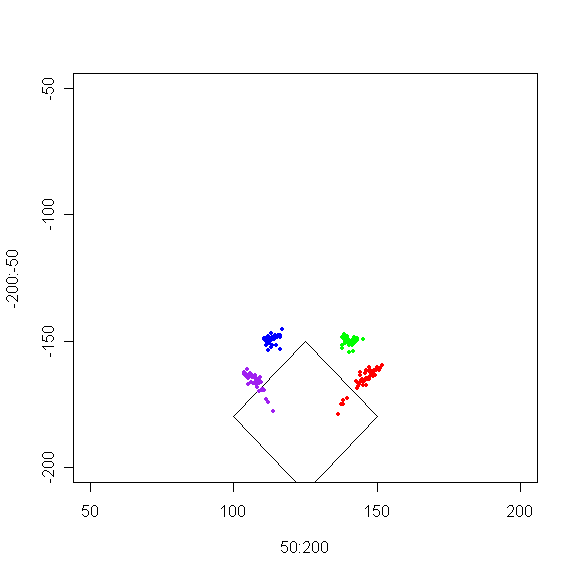Looking for defensive shifts, part II
1 Comments Published by Colin Wyers on Wednesday, April 30, 2008 at 10:36 PM.Last night, I went looking for defensive shifts. Well, here they are, broken down by base/out state and batter handedness:
There may be special cases, like the wishbone shift, but I think that's pretty representative of how fielders position themselves. (If you want the underlying data, here it is.)
It's hard to read the graph without looking at the accompanying data - the fielders don't always shift in the same direction on any given shift. Random thoughts based on a cursory reading of the data:
- Corner infielders tend to shift more than middle infielders. (As a measure of distance, that is.)
- For corner infielders, most shifts involve depth; most middle infielder shifts involve lateral movement.
- There's no small amount of noise to that graph; if I was going to use this sort of data for a project (say, determining responsibility for a ground ball in a zone rating type of system) I'd want to smooth it out into, say, maybe three or four different positionings per position. (Just eyeballing it real quick, for first base there seems to be three basic positionings - base empty, runner on first, and playing the bunt. Same for third base.)
- A lot of people were asking if having a good defensive third baseman could "cut into" a shortstop's graph, making his range look smaller than it really was. I have a hunch that we might be able to find out exactly how much third basemen are cutting into the shortstop's area of responsibility if we look at how much the shortstop's range grows when the third baseman is playing in.
My next project is going to be to figure out a way to estimate how many "chances" a player has at a position from the hit location data. (I haven't really done anything with it yet, but I have hit location data for balls hit into the outfield as well.) It's far less a conceptual problem than it is a judgement and labor problem - I have a good idea of how I want to delineate the zones of responsibility. The question is now how big to make the zones; then I have to actually go and write the code.
Labels: Baseball, Defense, Enhanced Gameday

Colin,
I just wanted to say that you should keep up the great work with this defensive data. You've definitely found your niche as a sabermetrician.